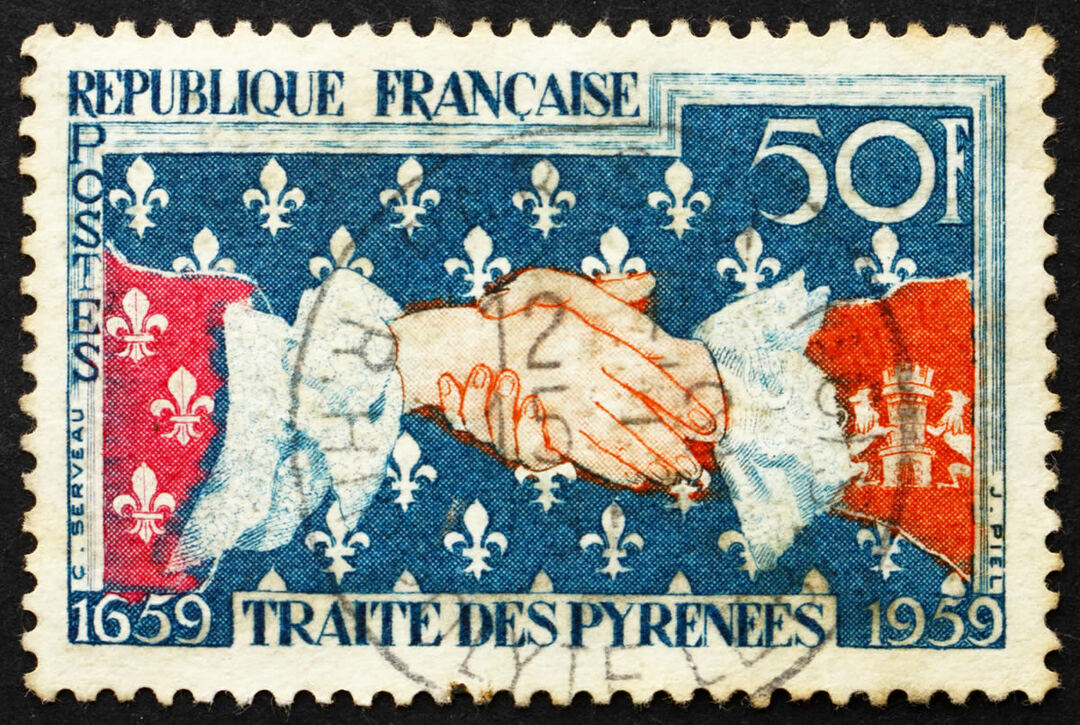Definition of the Treaty of the Pyrenees
Miscellanea / / July 04, 2021
By Guillem Alsina González, in Nov. 2018
 Signed by France and Spain on November 7, 1659 on the Isle of Pheasants (on the Bidasoa, the border river between the two states), this agreement of peace it shaped the European borders for the following centuries.
Signed by France and Spain on November 7, 1659 on the Isle of Pheasants (on the Bidasoa, the border river between the two states), this agreement of peace it shaped the European borders for the following centuries.
The Treaty of the Pyrenees was a peace agreement between France and Spain signed in 1659 that ended with the Thirty Years War between these two states, 11 years after the Peace of Westphalia.
Saying conflict The European war, started as a religious war in the German states, had seen all the European powers quickly become involved. The last to abandon their arms were France and Spain, who fought their private war until the aforementioned 1659, settling dominance over Europe.
Peace came not from a clear victory by one of the two contenders, but from the need to end a armed conflict that lasted from 1635 and that was swallowing the resources from both countries.
France has lived with Spanish dominions to the south and east for centuries, and has undermined Spanish power by helping the Dutch rebels in the Provinces. United and trying to play an important role in Italy, to which the Spanish have responded with economic power (thanks to their American empire) and military.
Spain also saw its European possessions threatened by France, so she was also interested in a peace with the neighboring country, which would allow him, on the other hand, to focus on the English threats and Dutch. Internally, the Spanish crown had also had to face the uprising in Catalonia and the change of side from the Catalans to the French side.
The definitive support for the peace negotiation was the Franco-English victory in the Battle of the Dunes, on June 14, 1658.
A year later the negotiations began, which would be led on the Spanish side by the 2nd Count Duke of Olivares, Luís de Haro, and on the French side, Cardinal Mazarin, successor of the mythical Cardinal Richelieu (yes, the same one that Alexandre Dumas demonized in The Three Musketeers) and one of the most talented politicians in French history.
The chosen place, the tiny Isle of Pheasants, was considered territory neutral by both crowns for more than two centuries. A small pavilion was built for the meeting, and both delegations built bridges from their side, fighting to impress the opposing side.
After three months of deliberations, a final agreement was reached, consisting of the exchange of several territories.
In the north, and along with the surrender of Artois, France also received strongholds in Flanders and Luxembourg, such as Metz or Verdun. In return, France returns to Spain the conquests that she had made in Italy.
But, without a doubt, the most important consequence of the Treaty of the Pyrenees was the fixing of the border between the two states in the Pyrenees, and the partition that this implied of Catalonia.
Violating the pacts signed with the Catalans both on the one hand and on the other, the French and Spanish agreed that Northern Catalonia, with capital in Perpignan and occupied by the Gallic troops after coming to the aid of the Catalan rebels, it would remain in French hands, with the exception from the Llivia enclave.
While initially the French promised the I respect at institutions and the Catalan fueros in the territories they would administer, only a year later these were abolished and the language Catalan prohibited and persecuted.
Finally, the agreement provided for the wedding between the French King Louis XIV (the famous Sun King) and the daughter of the Spanish monarch Felipe IV, María Teresa de Austria, which would be celebrated on June 9, 1660 on the same Island of the Pheasants.
The great importance of the Treaty of the Pyrenees for European history is that it has fixed the Spanish-French border up to the present (with the exception of the brief Napoleonic period), as well as the birth of France as a power at the European.
It also represents an important step on the road that will lead to the War of Succession to the Spanish crown, and that will fix the problem of Catalonia that still makes the headlines in Europe and the world.
Photo Fotolia: laufer
Topics in Treaty of the Pyrenees


